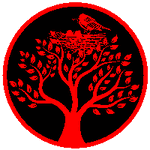-
Posts
732 -
Joined
-
Last visited
-
Days Won
4
Content Type
Profiles
Forums
Events
Store
Downloads
Gallery
Everything posted by MauroP
-
-

Need Some help with translation mei Tsuba
MauroP replied to Patrick86's topic in Translation Assistance
Jakushi - 若芝 (...but yes, probably cast) -

Mumei Kanayama tsuba that point to a specific tsubako
MauroP replied to Iaido dude's topic in Tosogu
Wovon man nicht sprechen kann, darüber muss man schweigen. [L. Wittgenstein, Tractatus Logico-Philosophicus, Proposition no. 7] -
Hi Viktor, the shape of your tsuba in unusual indeed, but not unique. The "wavy" shape is described as 皺目文 - shiwame-mon (wrinkled pattern). The irregularities near the nakago-ana are just yose-tagane made on the omote side to fit a particular sword tang. About the subjet depicted the man holding a broom in Chinese clothings could be "Kanzan and Jittoku" (where Kanzan is represented just by the scroll). Or could be the sixth Zen patriarch, Daikan Enō reading the stanza composed by his opponent Jinshū.
-
I have to disagree. The paper cover just the blade. And Tensho koshirae refers to some stylistic characters, not to the age that koshirae was actually assemblee.
-
Jake, search for 宇治川先陣 - Ujigawa senjin - Race at the Uji River
-
-
It should be 橋工人字透鐔, but I'm unable to grab the meaning...
-
What's written on the outside of the kiribaki?
-
Hi Grev, about the third tsuba see: https://www.militaria.co.za/nmb/topic/18068-another-shoami/ PS: the same tsuba?
-
Have we any reliable dating source for whatsoever unsigned tsuba?
-
You are possibly right, but most NBTHK shinsa staff think otherwise...
-
江刕彦根住 - Kōshū Hikone jū 藻柄子宗典製 - Sōheishi Sōten sei
-
On this point I completely agree with Dan (well, unusual, but can happen...). On the image below the red arrows point at different gilding of the same items in ura and omote. Quite interesting, the green arrow points at an unpressed area (confirming the way of production). So for sure, IMHO, a sanmai tsuba of lower quality BUT possibly very old (usualy papered as ko-kinko by NBTHK). Not worth the price asked, but not rubbish...
-
I regret to disagree on the attribution of the first tsuba to Kaga school. Maybe I'm unable to see properly the pics, but my guess is nunome-zōgan. Kin-nunome-zōgan on iron makes (more probably) Kyō-kenjō school.
-
Nanako describes a pattern, whatsoever the way it was obtained. Here a NBTHK paper reporting nanako-ji in a sanmai tsuba: https://eirakudo.sho.../tsuba/detail/774209
-
-
Maybe a sanmai shitate (三枚仕立) tsuba?
-
與政 more likely reads Tomomasa (as you have already written in the book)
-
-
-
Here a quite common religious theme (well, it takes a little bit of explanation...). The theme is obviously 茗荷 - myōga (Japanese ginger). But 茗荷 is perfectly homophonous with 冥加 (myōga) meaning divine protection or divine blessing. This kind of pun is not uncommon (e.g. budō meaning both grape and martial arts).
















